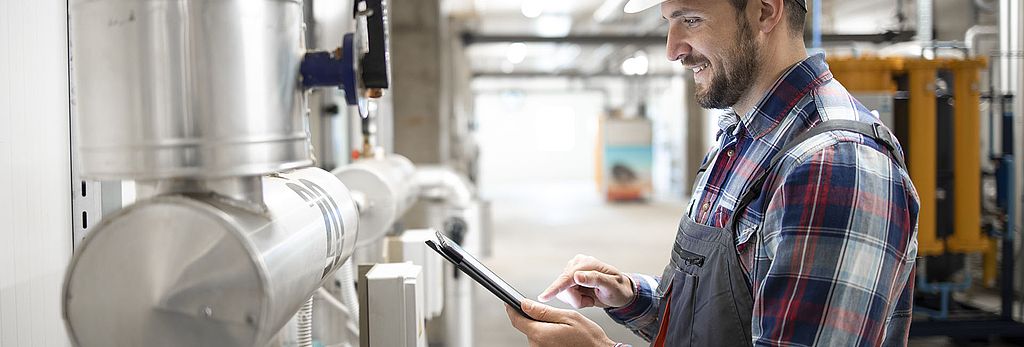
Net calorific value & gross calorific value
What is net calorific value & gross calorific value?
The terms net calorific value and gross calorific value of a fuel to generate motion or fuel to generate heat describe the amount of heat released in an energy source when it undergoes complete combustion with oxygen, or in other words: how much energy in the form of heat these substances can generate during combustion. Net calorific value differs from gross calorific value in that it does not include the condensation heat of water, as this is usually dissipated as unused steam:
- Net calorific value (Hi) = gross calorific value (Hs) – condensation heat
- Gross calorific value (Hs) = net calorific value (Hi) + condensation heat
So the gross calorific value indicates how much energy can be released during the complete combustion of a given amount of fuel: It is comprised of the net calorific value plus the energy contained in the exhaust gases and in the water vapor produced during combustion. Therefore, the gross calorific value is always higher than the net calorific value. If the water remains in the exhaust gas as water vapor, the net calorific value is specified. But if the exhaust gases are cooled below the condensation point of water vapor (for example, in condensing boilers) the gross calorific value is given. The gross calorific value is denoted by Hs (s = superior, Latin for “higher”), previously it was also called higher heating value. Net calorific value is denoted with Hi (i = inferior, Latin for “lower”), formerly it was also known as lower heating value.
Net calorific value and gross calorific value are given as specific values based on mass in kilojoules per kilogram (kJ/kg), or in kilowatt-hours per kilogram (kWh/kg); the conversion factor is 1 kWh = 3.6 MJ. For gases, the basic unit for net calorific value and gross calorific value is measured in kilojoules per cubic meter (kJ/m³), based on the volume. For heating oil, conversion into kilowatt hours per liter (kWh/l) is also common.
The term “energy density” is also sometimes used, but it is not very meaningful, as it does not indicate whether the net or gross calorific value is meant.
“Condensing boilers” can achieve higher levels of efficiency than older boilers without condensing heating technology, because they use the heat of condensation. Since condensing boilers can additionally utilize the exhaust energy, they achieve efficiencies of 106% (Hi) in oil condensing boilers and a max. of 111% (Hi) in gas condensing boilers. Condensing boilers are designed so that they can greatly lower the exhaust gas temperature (for example, to 40°C), so that a significant portion of the water vapor condenses in the boiler and this condensed water (“condensate”) can be discharged as waste water. In this way, the heat of condensation can be utilized in addition to the net calorific value.
The following table shows some examples of net calorific value & gross calorific value for various substances:
| Solid | Gross calorific value (MJ/kg) | Net calorific value (MJ/kg) |
|---|---|---|
| Bituminous coal | 31.7 | 29.7 |
| Coke | 28.9 | 28.7 |
| Charcoal | 33.7 | 33.5 |
| Wood, air-dried | 16.9 | 15.3 |
| Wood pellets | 20.0 | 18.0 |
| Liquid | Gross calorific value (MJ/kg) | Net calorific value (MJ/kg) |
|---|---|---|
| Gasoline/petrol | 45.0–46.0 | 42.0–43.5 |
| Diesel fuel or Heating oil EL | 44.0–45.4 | 40.0–43.0 |
| Heavy fuel oil | 43.1 | 42.0 |
| Methanol | 22.3–22.6 | 19.5–19.8 |
| Ethanol | 29.7–29.9 | 26.8–26.9 |
| Gaseous | Gross calorific value (MJ/kg) | Net calorific value (MJ/kg) |
|---|---|---|
| Butane | 134.0 | 123.6 |
| Methane | 55.4 | 50.0 |
| Natural gas L | 42.4 | 38.3 |
| Natural gas H | 52.3 | 47.3 |
| Hydrogen | 142 | 120 |
Sources for the table: Römpp's Lexikon Chemie, energie-lexikon.info, uni-magdeburg.de
Status: December 2015
All information subject to change. Errors and omissions excepted.

